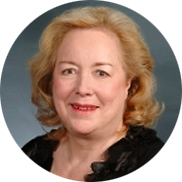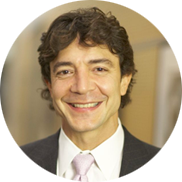Lung Cancer: Smokers and Non-Smokers are at Risk
With Claudia Henschke, PhD, MD and Raja Flores, MD
Lung cancer is the #1 cancer killer in the US and in the world and even though a majority of the cases are linked to smoking, up to 25% of lung cancer deaths in the US are people that have never smoked.
Despite the high mortality rate, lung cancer screening guidelines set forth by The US Preventive Services Task Force (USPSTF) was only reaching 20% of lung cancer cases. This is in major contrast to other cancer screenings, such as breast or prostate cancer, where all individuals over a given age are advised and eligible to be screened.
To help locate more lung cancer cases and earlier in their growth, the screening guidelines have been recently revised. The USPSTF now suggests annual screenings start at age 50 (down from 55) and your smoking history is lessened from 30 pack years to 20 pack years. (Pack years is the number of years you smoked multiplied by the number of packs of cigarettes per day. For example, 20 pack years could be one pack a day for twenty years or two packs a day for ten years.)
However, despite the expanded screening guidelines, individuals that don’t have a smoking history still fall outside these new guidelines. This is where education is important and people understand that even though they may not be eligible per the guidelines for a free test, they still have the opportunity to test if they have reason to be concerned, whether because of family history of lung cancer or environmental influences.
To share more information on lung cancer and the importance of lung cancer screening, we turned to the experts. Our medical director, Dr. Louis DePalo interviewed world-renown Mount Sinai physicians:
-
Dr. Claudia Henschke, radiologist and
-
Dr. Raja Flores, thoracic surgeon
Watch the Q&A below to learn more. If you have a family history of lung cancer, meet the screening guidelines, or want to learn more about your options, we encourage you to contact our Personal Health Navigators by chat through the member portal or by calling 646.819.5100 to be connected with one of our physicians.
 |
Interview with radiologist, Dr. Henschke on the importance of screening and how to get screened even if you don’t meet the criteria defined by the USPSTF. |
Lung cancer CT screening is a relatively new screening tool. Can you describe your pioneering work to bring this important modality into focus?
Key takeaway: Lung cancer screening is a relatively new screening process (in comparison to other cancer screenings). In the 90s, Dr. Henschke was instrumental in pioneering CT scan for the screening of lung cancer. There was some initial resistance, but when they published results in 1999, it garnered worldwide interest that led to more national and international trials. CT screening for lung cancer is now widely accepted. It is a very sensitive test, low dose (lower than a mammogram) and has life saving benefits.
How would you rate the sensitivity and specificity of CT screening?
Key takeaway: CT scans are the most sensitive test for finding lung cancer – they can locate cancer as small as a grain of rice.
What prompted the US Preventive Task Force to update their screening guidelines?
Key Takeaway: To be eligible for free screening, you must be 50 years or old and have a 20 pack years history of smoking. Even with these expanded guidelines, there is still the 25% of US lung cancer deaths that are attributed to never smokers and those people are not being reached by these guidelines. Additionally, only 4-15% of those eligible for the screening actually get screened. There needs to be more education on the benefits of screening.
Traditionally we think of lung cancer as a “smokers” disease, however, we are experiencing an epidemic of non-smoking related lung cancers, perhaps linked to passive smoke, radon, asbestos, and other environmental carcinogens. How do we screen non-smokers for lung cancer?
Key takeaway: We have Institutional Review Board approval and have all along been screening individuals 40 years and older who are non-smokers. The cost of the screening test is unfortunately not covered, but the expense is minimal – $150 for the test. In addition to the risk factors listed in the question, individuals with a family history of lung cancer should also be screened.
More women die of lung cancer than breast cancer and their cases don’t seem to be as closely related to smoking. Can you speak to their outcomes compared to men?
Key takeaway: We have a lot of published research to support that women are at twice the risk for lung cancer, than that of equally aged and equally smoking men. Therefore, if the criteria is 50 years for men, in a sense, it should be a lower age for women. The reason behind this is still not clear.
 |
We interviewed thoracic surgeon, Dr. Raja Flores to further the discussion on other risk factors and dive a little deeper into the patient journey once something is found in a screening. |
Now that we know lives can be saved by lung cancer screening, can you walk us through the patient journey once a suspicious nodule or “spot” is found?
Key takeaway: Lung cancer screening can really save lives and it is a shame it has taken so long to bring screening to the forefront. Once a nodule is found, it must first be determined if the nodule is cancerous. You can either put a needle in it, do a minimally invasive biopsy (through three small holes), or continue to watch it. If you find it earlier and it is smaller, less lung then has to be removed and your chance of being cured is greater.
We know smoking is a significant risk factor for lung cancer, but not the only one. You are internationally known for your work with asbestos related lung cancer and mesothelioma, a cancer seemingly unique to asbestos. How soon can this disease become a thing of the past?
Key takeaway: Unfortunately, we see a lot of mesothelioma in New York City because of the presence of asbestos in housing. If we eliminate asbestos, we eliminate mesothelioma – a cancer that cannot be cured and has negative outcomes for most who get it.
There are still a number of people getting cancer that have never smoked, what does that tell us about still unidentified carcinogens in our environment?
Key takeaway: Dr. Flores emphasizes that cancers can be caused by something in your surroundings. For lung cancer, in addition to smoking, it could be exposure to radon, asbestos, or secondhand smoke – without you even being aware of the exposure.
In this new era of genetics, immunotherapy, “targeted” therapy, proton beam radiation – these new minimally invasive procedures, how do you see the role of the surgeon changing?
Key takeaway: There are a lot of advancements in medicine, but I don’t see the role of the surgeon changing. Lung cancer screening can give you a survival of greater than 80% at five years. The only way to rid yourself of cancer and be cured, is to catch it early and have it removed. Many of the medicines and other procedures are able to prolong your life, but they are not able to cure you of cancer.
Some people have taken up vaping or smoking marijuana in place of smoking cigarettes. Are these alternatives any less likely to lead to lung cancer?
Key takeaway: The younger generation is exposed to a lot more cancer causing agents, which includes vaping and marijuana. There are cases in which smoking marijuana has led to aggressive lung cancer and with vaping, we haven’t had enough time to see the cancers develop, but the same carcinogens are in vaping as in smoking cigarettes. Additionally, vaping is at 400 degrees, essentially burning your lungs. It is not the lesser of the two evils.
About Claudia Henschke, PhD, MD
Dr. Henschke is a pioneer and leading expert in diagnostic radiology with more than 25 years of clinical and research experience with low-dose CT screening; and she has led the implementation of numerous city, state, national, and international lung screening programs.
Since the start, in 1992, of the Early Lung Cancer Action Project (ELCAP), Dr. Henschke has worked on advancing the CT screening research of early lung disease, with a particular focus on lung cancer. ELCAP soon grew into an international program (I-ELCAP), and now she leads a collaborative and international group of distinguished physicians and scientists whose 75 institutions have, to date, screened over 79,000 people in 10 countries around the world for I-ELCAP.
Dr. Henschke has authored over 400 peer-reviewed publications, two books, many scientific presentations, and has trained over 80 physician researchers.
See Dr. Henschke’s full bio on Mount Sinai’s website.
About Raja Flores, MD
Dr. Flores is a recognized leader in the field of Thoracic Surgery for his pioneering efforts in the treatment of mesothelioma. He has established VATS lobectomy, a minimally invasive approach using three small incisions, as the gold standard in the surgical treatment of lung cancer. He published two sentinel studies validating its oncological effectiveness by demonstrating equivalent survival and recurrence rates with fewer complications and shorter hospital stays when compared to standard thoracotomy. Dr. Flores implemented the current program for this procedure at Memorial Sloan-Kettering Cancer Center. He was a lead investigator in a multicenter trial of neoadjuvant alimta/cisplatin, extrapleural pneumonectomy, and high-dose radiation which is designed to improve outcomes.
Dr. Flores currently has one of the largest VATS lobectomy experiences in the world. He has published this data and has presented it at numerous national and international meetings.
Get up-to-date information and health tips in your social feeds